第148章 NOTES(10)
[320]--Firishtah relates an interesting anecdote about this in his history of the Ahmadnagar Sultans.Hussain Nizam Shah desired to make peace with Vijayanagar,and Rama Raja offered to grant it on certain conditions,one of which was that Kallian should he restored to Bijapur,and another that the Nizam Shah should submit to pay him a visit and receive betel from him.Hussain was in such straits that he accepted these severe terms and went to Rama Raja's camp,"who rose on his entering his tent (he did not go out to meet him)and kissed his hand.The Sultan,from foolish pride,called for a basin and ewer,and washed his hands,as if they had been polluted by the touch of Ramraaje,who,enraged at the affront,said in his own language,'If he were not my guest he should repent this insult;'then calling for water,he also washed."Hussain then gave up the keys of Kallian.
[321]--Scott's "Firishtah."i.291;Briggs,iii.406.
[322]--20th Jamada 'l awwal,Hijra 972.Firishtah (Scott),i.295;Briggs,iii.413.
[323]--Though,in fact,the battle did not take place there,but many miles to the south of the river.Talikota is twenty-five miles north of the Krishna.The battle took place ten miles from Rama Raya's camp south of the river,wherever that may have been.There is no available information on this point,but it was probably at Mudkal,the celebrated fortress.The ford crossed by the allies would appear to be that at the bend of the river at Ingaligi,and the decisive battle seems to have been fought in the plains about the little village of Bayapur or Bhogapur,on the road leading directly from Ingaligi to Mudkal.
[324]--Couto (Dec.VIII.c.15)tells an incredible story that Rama Raya was utterly ignorant of any impending attack,and never even heard that the enemy had entered his territories till the news was brought one day while he was at dinner.
[325]--Below,pp.275to 279.
[326]--I have seen on several occasions bodies of men collected together at Vijayanagar and the neighbourhood,dressed and armed in a manner which they assured me was traditional.They wore rough tunics and short drawers of cotton,stained to a rather dark red-brown colour,admirably adapted for forest work,but of a deeper hue than our English khaki.They grimly assured me that the colour concealed to a great extent the stains of blood from wounds.Their weapons were for the most part spears.Some had old country swords and daggers.
[327]--Firishtah gives the date as "Friday the 20th of Jumad-oos-Sany,"A.H.972(Briggs,iii.414),but the day of the month given corresponds to Tuesday,not Friday.
[328]--What follows is taken entirely from Firishtah (Scott,i.296ff.;Briggs,iii 128,247).
[329]--Dec.VIII.c.15.
[330]--An interesting note by Colonel Briggs is appended to his translation of these passages of Firishtah (iii.130)."It affords a striking example at once of the malignity of the Mahomedans towards this Hindoo prince,and of the depraved taste of the times,when we see a sculptured representation of Ramraj's head,at the present day,serving as the opening of one of the sewers of the citadel of Beejapoor,and we know that the real head,annually covered with oil and red pigment,has been exhibited to the pious Mahomedans of Ahmudnuggur,on the anniversary of the battle,for the last two hundred and fifty years,by the descendants of the executioner,in whose hands it has remained till the present period."This was written in 1829.
[331]--Couto calls them "Bedues,"probably for "Beduinos,""Bedouins"or wandering tribes.
[332]--In this I follow Couto;but the Golkonda historian quoted by Briggs (Firishtah,iii.414)states that the "allied armies halted for ten days on the field of action,and then proceeded to the capital of Beejanuggur."It is,however,quite possible that both accounts are correct.The advanced Muhammadan troops are almost certain to have been pushed on to the capital.The main body,after the sovereigns had received information that no opposition was offered,may have struck their camp on the tenth day.
[333]--Purchas,edit.of 1625,ii.p.1703.
[334]--Couto states that this diamond was one which the king had affixed to the base of the plume on his horse's headdress (Dec.VIII.c.15).(See Appendix A.)[335]--Portuguese ARMEZIM,"a sort of Bengal taffeta"(Michaelis'
Dict.).
[336]--Gold coins of Vijayanagar.
[337]--KULLAYI.See below,p.252,273,383,and notes.
[338]--Dec.VIII.c.15.I have taken this and the next paragraph from Lopes's CHRONICA DOS REYS DE BISNAGA,Introd.,p.lxviii.
[339]--Writing in 1675,the travelled Fryer relates what he saw of the Inquisition at Goa.I take the following from his Letter iv.,chapter ii."Going the next Morning to the Palace-Stairs,we saw their Sessions-House,the bloody Prison of the Inquisition;and in a principal Market-place was raised an Engine a great height,at top like a Gibbet,with a Pulley,with steppings to go upon,as on a Flagstaff,for the STRAPADO,which unhinges a Man's joints;a cruel Torture.Over against these Stairs is an Island where they burn ...all those condemned by the Inquisitor,which are brought from the SANCTO OFFICIOdress'd up in most horrid Shapes of Imps and Devils,and so delivered to the executioner....St.JAGO,or St.James's Day,is the Day for the AUCTO DE FIE."And in chapter v.of the same Letter he states that,when he was at Goa,"all Butcher's Meat was forbidden,except Pork"--a regulation irksome enough even to the European residents,but worse for those Hindus allowed by their caste rules to eat meat,but to whom pork is always especially distasteful.Linschoten,who was in India from 1583to 1589,mentions the imprisonments and tortures inflicted on the Hindus by the Inquisition (vol.ii.pp.158--227).
[340]--Caesar Frederick.
[341]--I.E.,they advanced by way of Mudkal,Tavurugiri,and Kanakagiri,a distance of about fifty-five miles,to Anegundi on the north bask of the river at Vijayanagar.